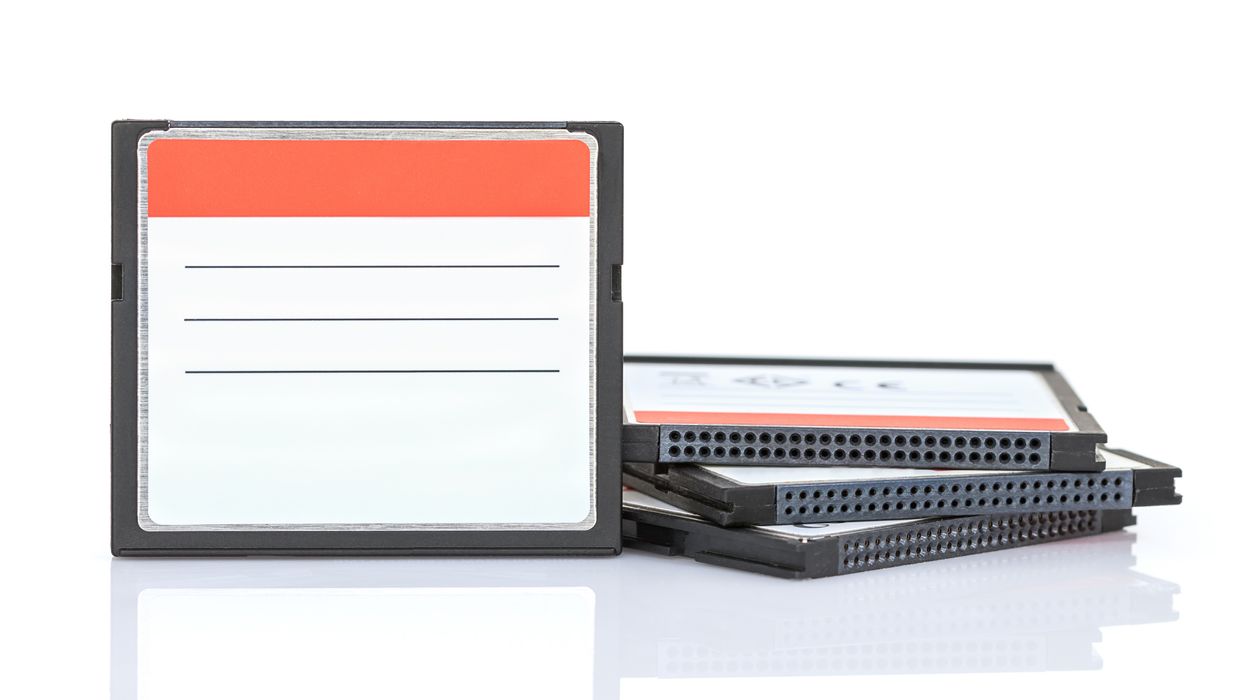Best Practices for Memory Card Safety
Memory cards do one of the most important jobs on set, so you need to make sure you're taking good care of them.

I’ve been primarily a digital shooter for my entire career (much like a great deal of you) and even with years and years of experience under my belt, I always get a little flutter of apprehension in my tummy tum when dealing with my memory cards and hard drives.
While there’s no absolute way to ensure that your memory cards in your camera will always perform flawlessly, there are a few key things to keep in mind when dealing with your data. Check out this video from Basic Filmmaker for a good primer before we jump into the nitty-gritty.
Always Format the Memory Card
It seems obvious but it cannot be overstated. Most people think of formatting their cards as just deleting the existing footage or photos that are on it so that you have maximum recording space. While that is what happens, the main point is to get the memory card properly calibrated to record native data from your camera.
A lot of memory card/recording issues will stem from having a card in your camera that’s formatted for another type of camera. For instance, I was shooting with a memory card inside of an a7RIII that hadn’t been formatted and was previously used inside of a Nikon D850. The result was that several of my files had artifacting (miscellaneous and intermittent digital visual interruptions). Fortunately, I was playing back the footage on a computer to test the setup and noticed it. This leads to my next point:
Check the Test Footage Before the Big Shoot
Again, seems simple, but is oftentimes overlooked. The native screens on our cameras are inherently distrustful, mainly because of the devices on which they live. Of course, a Nikon screen, mounted to a Nikon camera, will portray a Nikon-based RAW file perfectly. This goes without saying. To really test a camera’s recording reliability, it’s recommended to shoot a few clips or shots with the camera fully set up, eject the memory card, and put it into the computer as if it were a full memory card.
This lets you see how the memory cards perform in a normal shooting scenario without the risk of losing a key moment, as well as shows how the editing and hard drive setup that you will be using handles these files. Basically, it’s just one giant slightly-inconvenient-but-totally-worth-it, check-sum.
Back That Footage Up!
And, moreover, back up the backup. If you can’t back up your footage at least twice, make sure that your card is properly labeled and you don’t use that card again until you can make at least two redundancies.
Why two?
I’ll tell ya!
Two backups are recommended because in some cases (seldom, I grant you), the corruption of the footage actually comes from the act of transferring the file, not the recording of the file. By transferring twice, you can ensure that any mistakes that happened on the first transfer that were caused by the actual data transfer itself won’t happen again. Also, when transferring, always do it from the same source. Don’t transfer from one backup to another. Always transfer from the original data source.
If you have a problem with the files playing back properly on both backups (which you should check before moving forward with your shoot), then the problem lies with the memory card, not the hard drive setup or the editing setup.
There are a multiplicity of different ways to ensure that your footage is secured and properly recorded, but I’d say that these three would be the pillars off of which any other check-sum operation is based.
What are your thoughts? Let us know below how you make sure that your footage is safe and secure?
Source: Basic Filmmaker












